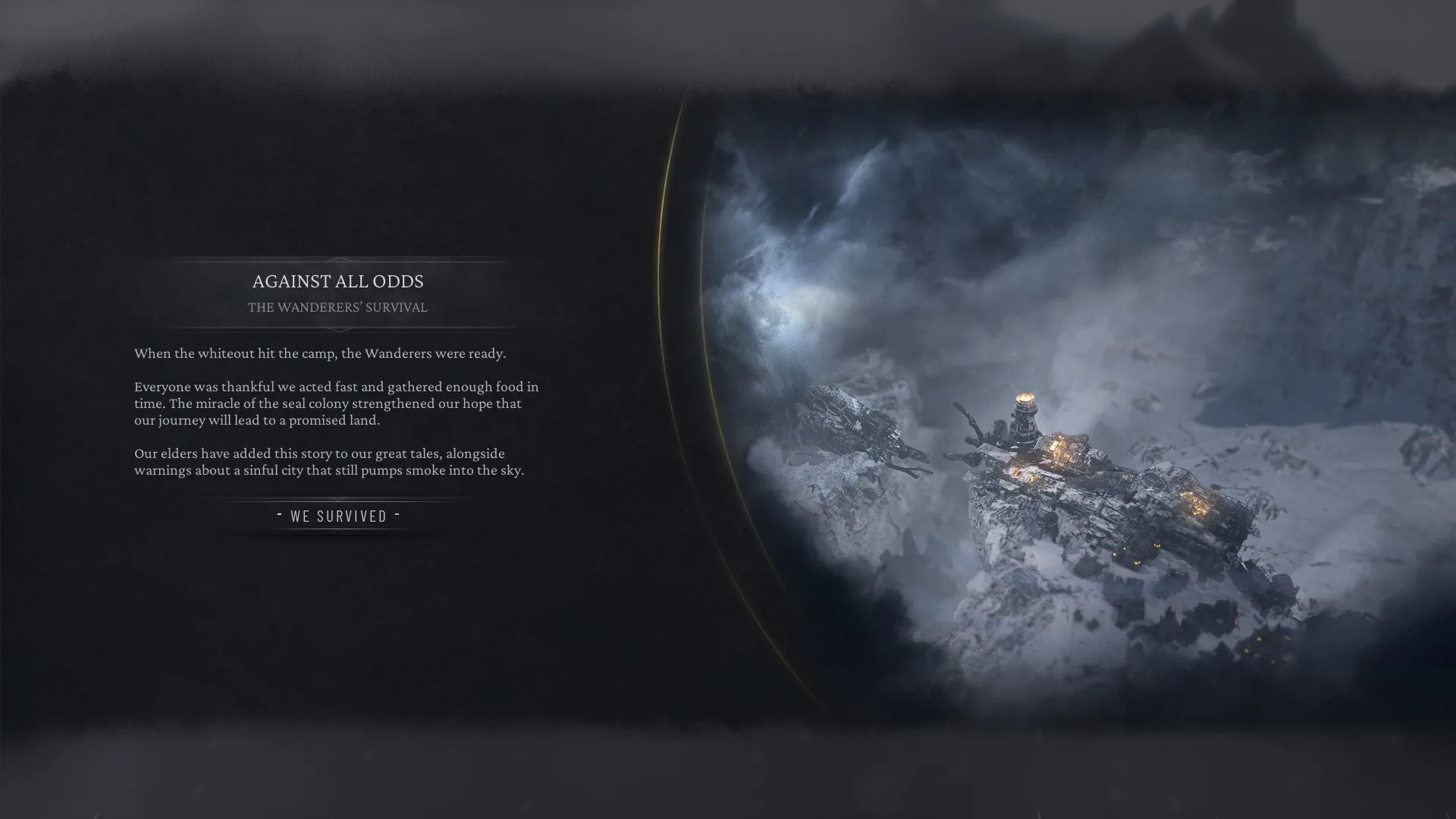
Frostpunk 2: A Worthy Successor to a Frozen Throne
Contents
Six years have passed since the original Frostpunk chilled gamers to the bone, and in that time, no game has truly replicated its unique blend of city-building, survival, and societal management. Frostpunk masterfully combined intelligent storytelling with weighty, yet accessible, city management systems, all set against the stark backdrop of a post-apocalyptic ice age. This carefully crafted harmony made it a near-perfect gaming experience. However, this tight focus also stemmed from the game’s relatively small scope.
Frostpunk essentially chronicled the desperate struggle of a small community over a short period. While it powerfully portrayed the psychological and existential burdens of survival, it left lingering questions about the future. Each playthrough often ended with a poignant question: what becomes of the next generation?
The original Frostpunk expanded its core gameplay with several DLCs of varying quality, each attempting to build upon its excellent foundation. Now, the legacy of Frostpunk rests upon the shoulders of its sequel, Frostpunk 2. Does it live up to the immense expectations? Or will the pressure and ambition crush it beneath the snow like the ill-fated citizens of Winterhome? Let’s light our generator cores and delve into the frozen world of Frostpunk 2.
 Frostpunk 2 City View
Frostpunk 2 City View
Industrialization, Modernization, and… Complication!
The first thing players will notice in Frostpunk 2 is its sheer scale. New London, painstakingly built over hours in the original, is now a mere speck on the map. Gone are the individual buildings meticulously placed one by one. Players now construct vast districts with a few clicks, each dedicated to a specific role: agriculture, housing, production, or resource extraction.
The scope of time and labor has also dramatically increased. Time is measured in weeks, not days, and the population swells to thousands. Each district demands hundreds of workers, and upgrades can double or triple that requirement. Even seemingly minor tasks like frostbreaking for construction require 200 workers over several weeks.
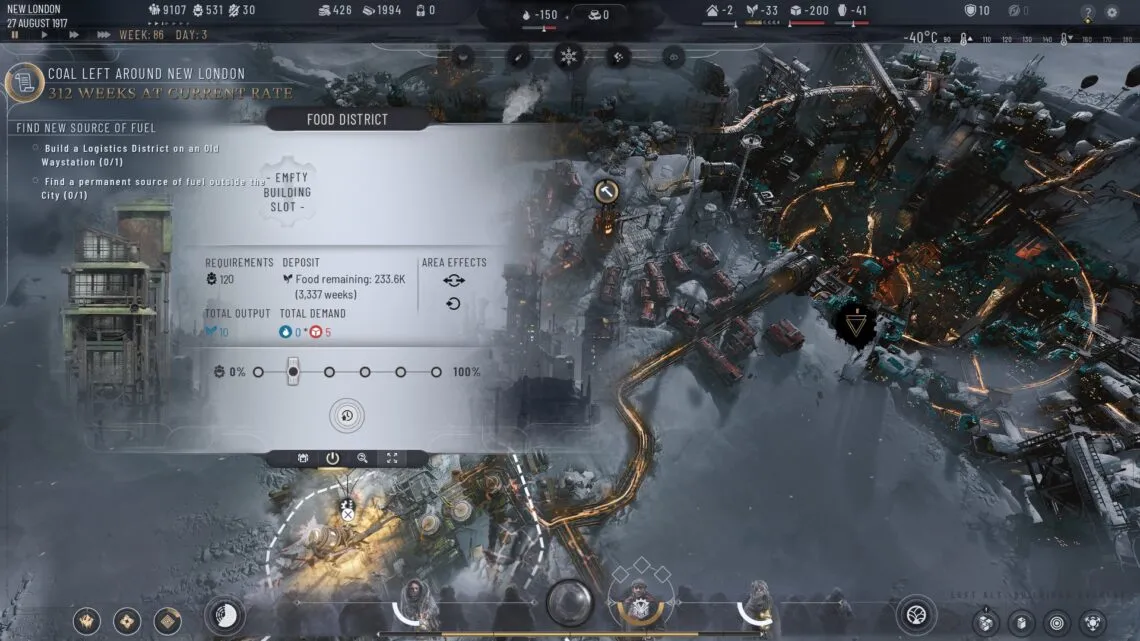 Frostpunk 2 Resource Management
Frostpunk 2 Resource Management
Exploration and resource outpost construction have expanded significantly. Players must build roads between outposts and the city, manage a new workforce of Frostlanders for expeditions, and even oversee two subsidiary cities, each with their own needs and resources.
This vast scale also complicates city management. Essential resources like coal and food return, while others like wood and steel are consolidated into “materials.” Labor is no longer divided into skilled and unskilled. The game automatically calculates resource surpluses and deficits, simplifying some aspects. However, this streamlining is necessary to avoid overwhelming players with the new complexities. “Goods,” “prefabs,” “heat stamps,” and specialized worker roles like Frostlanders and guards add new layers to the resource management puzzle.
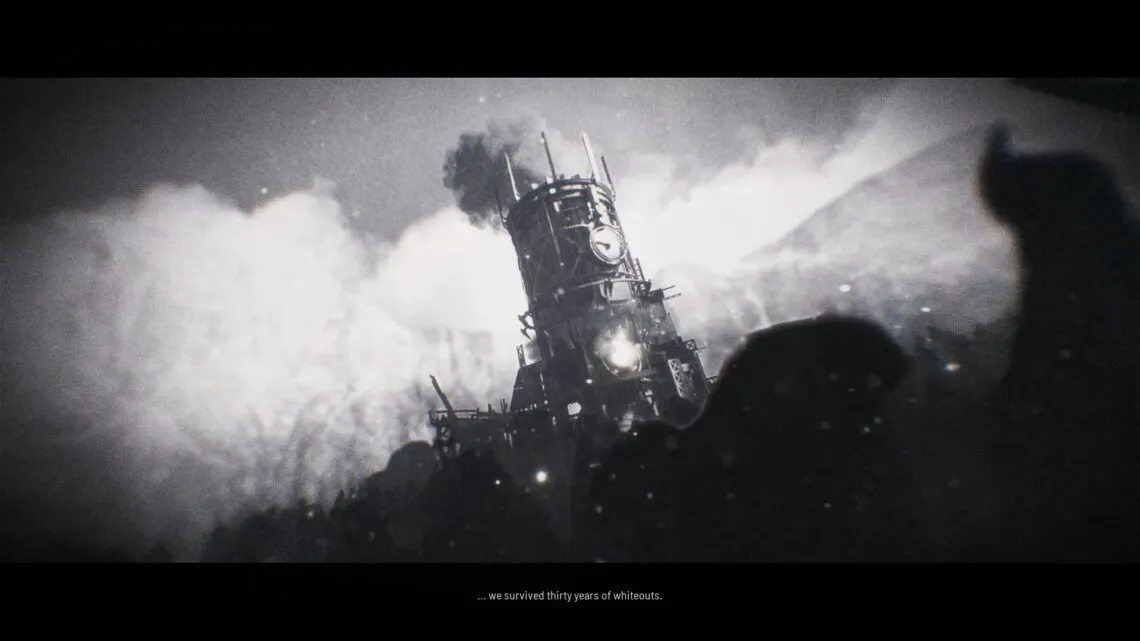 Frostpunk 2 City Districts
Frostpunk 2 City Districts
Citizen needs now extend beyond food, warmth, shelter, and healthcare to include “squalor” (infrastructure maintenance) and “crime.” These are influenced by factors like surplus goods and material reserves. This intricate web of interconnected systems creates Frostpunk 2‘s core gameplay loop. Players constantly balance resources to minimize losses from environmental hazards and societal pressures while generating surpluses to weather the inevitable storms.
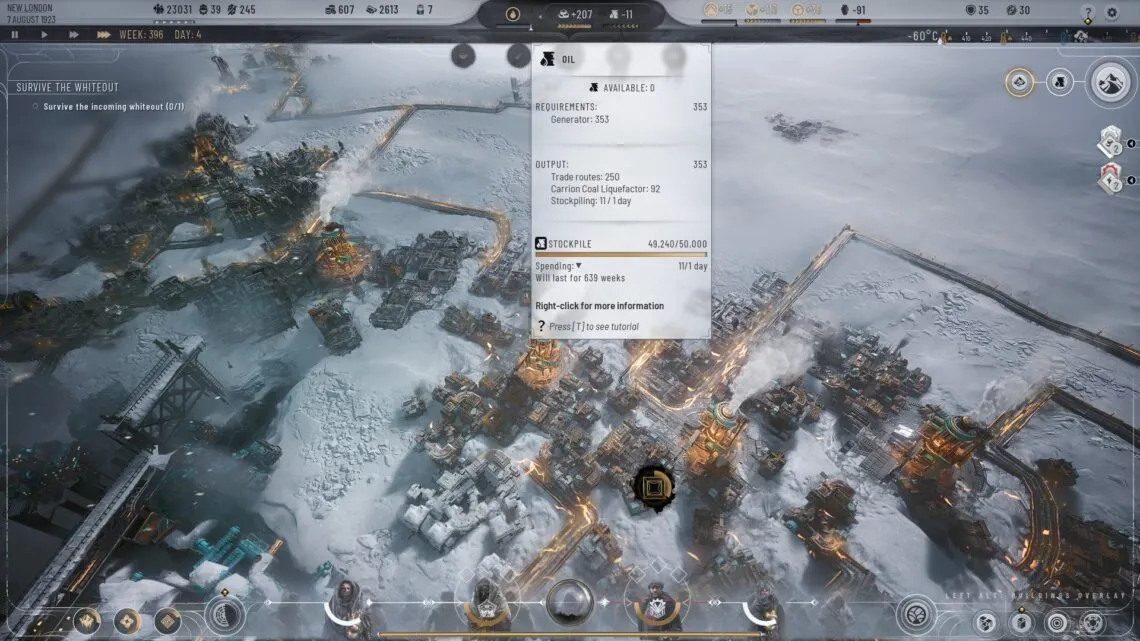 Frostpunk 2 Exploration
Frostpunk 2 Exploration
This complexity, however, is also Frostpunk 2‘s greatest strength. Discovering the intricate relationships between the game’s variables creates a rewarding and addictive learning experience. Players will constantly devise new strategies, unravel bottlenecks, and explore innovative approaches.
White Snow, Black Oil, and Red Lines!
As in the original, resource management is only part of the challenge. In the main campaign, players lose only when overthrown. Thirty years after the first game, New London is more prosperous and stable, leading to the emergence of a democratic state, political factions, and ideological divisions. The challenge is no longer simply balancing hope and discontent, but managing conflict and building trust.
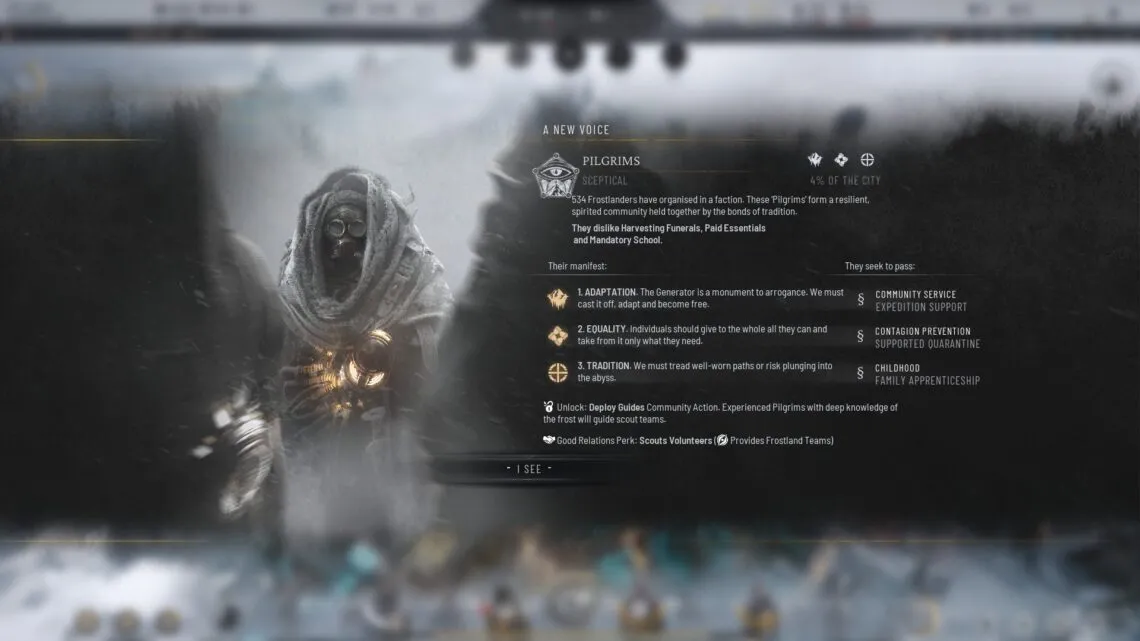 Frostpunk 2 Political Factions
Frostpunk 2 Political Factions
The new political system adds significant depth, complementing the familiar mechanics of technology upgrades and law enactment. New London’s citizens are divided into four to six distinct factions with clear left and right wings, each with specific ideologies and, importantly, extremist elements. These factions play a crucial role in technology research and lawmaking. Most tech upgrades offer multiple research paths, each favored by a different faction. For example, with goods production, the conservative “Survivalists” favor recycling, while the progressive “Technocrats” advocate for efficiency-enhancing upgrades.
This intertwining of politics and technology makes each research decision a complex calculation involving resources and political ramifications. The political system goes beyond managing conflict and trust, directly impacting city operations. Many researched technologies require legislative approval, introducing a new layer of political maneuvering.
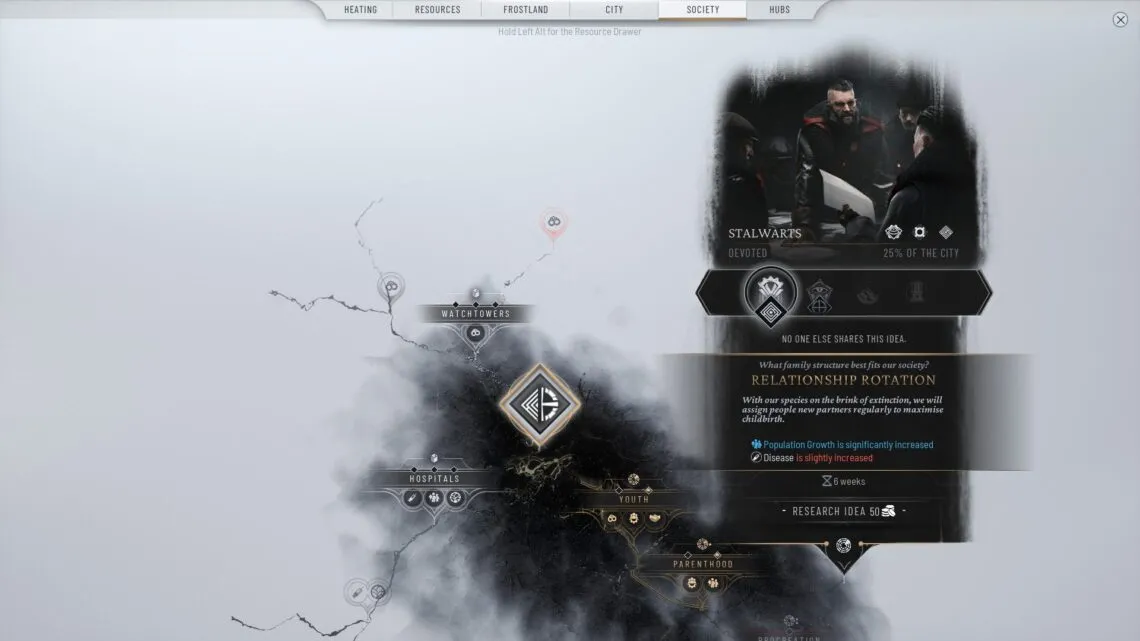 Frostpunk 2 Law Enactment
Frostpunk 2 Law Enactment
Laws require a majority vote in the parliament. This parliament mechanic is arguably Frostpunk 2‘s most compelling addition. It tests players’ political acumen and serves as a focal point for societal management. Each faction holds parliamentary seats proportional to its population, and their members will support or oppose laws based on their ideology. However, everyone has a price. Players must negotiate with factions to pass beneficial laws or block harmful ones, making promises, offering public support, granting parliamentary control, or even resorting to bribery.
These negotiations can build trust, but broken promises or actions against a faction’s interests can escalate conflict. Players will face difficult choices, particularly when resources are scarce. Promises, political machinations, laws, and conflicting ideologies escalate as the game progresses. Players must choose between moderation and extremism, short-term gains and long-term stability, and the demands of powerful minorities versus the will of the people.
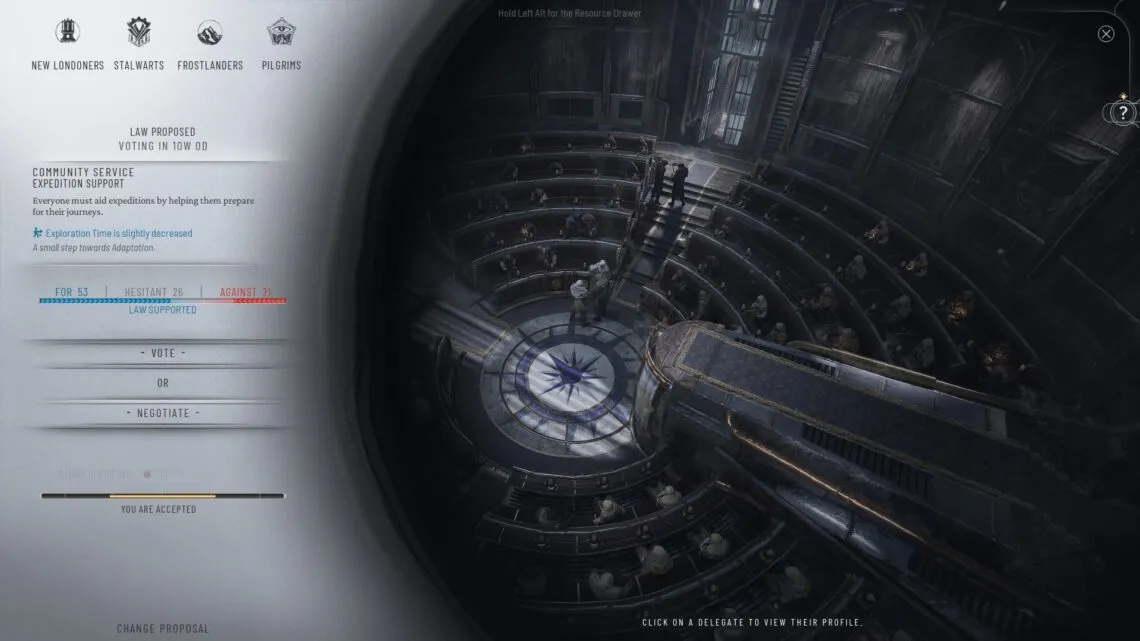 Frostpunk 2 Parliament
Frostpunk 2 Parliament
These choices become increasingly difficult, events more extreme, and conflicts more intense, ultimately culminating in the threat of civil war. Regardless of the outcome, players will grapple with the ethical implications of their choices, experiencing regret, remorse, pride, or satisfaction. Frostpunk 2 masterfully crafts detailed political, legal, and technological systems, weaving them into a cohesive whole tightly linked with resource management, infrastructure, and societal variables. This intricate tapestry creates a compelling and consistent experience that effectively portrays moral dilemmas through its core mechanics.
A Grand New World!
Frostpunk 2‘s final major improvement lies in its presentation. The game is bigger, grander, and more visually impressive. The immense scale and rapid pace of time sacrifice some of the original’s intimacy. Instead of individual citizens bustling about and buildings slowly rising, players witness rapid, synchronized construction of detailed structures.
Roads glow with ethereal light, reflecting the city’s frantic pace. As players adapt to the rhythm, they become mesmerized by the majestic beauty of the sprawling metropolis, its tireless citizens, its massive industrial complexes, the steam rising into the frosty air, the busy machinery, and the flow of people through the city’s veins. Current optimization issues may detract somewhat from this beauty, but future patches should improve the overall experience.
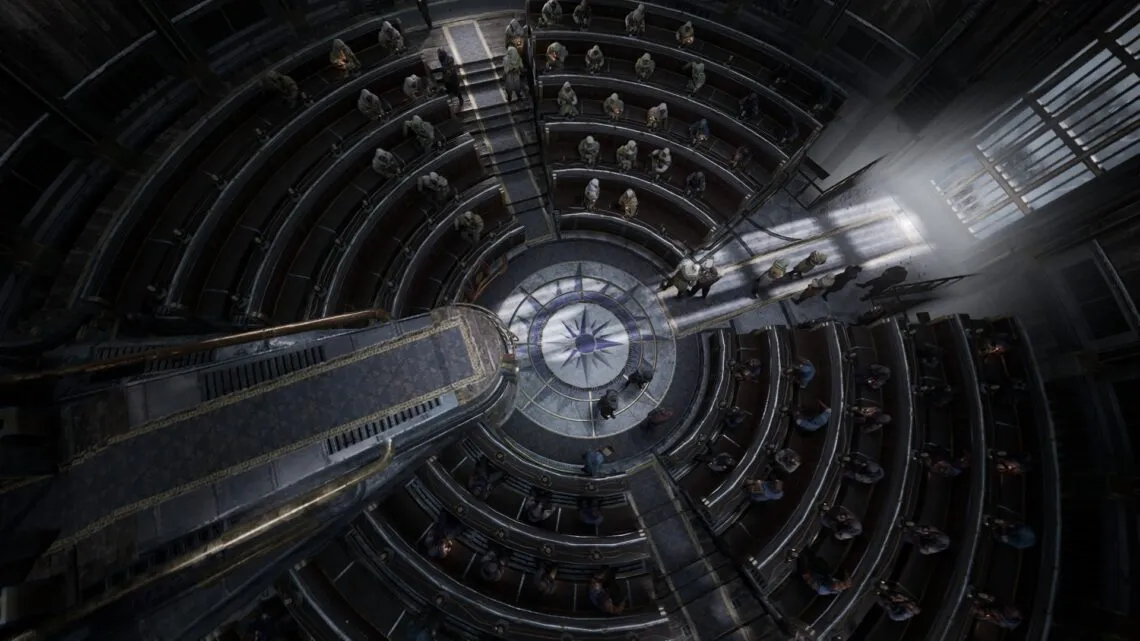 Frostpunk 2 Interface
Frostpunk 2 Interface
Frostpunk 2‘s interface is also beautifully designed. The steam-powered machinery of the original is replaced with ivory panels adorned with striking artwork and detailed, engaging explanations. The exploration interface is now a map with clear elevation and coordinates, beautifully illustrating key locations and supply lines.
Sound design, as in the original, is a major strength. The hum of machinery, the whistling wind, and the announcements return, enhanced with greater variety and detail, reflecting specific events like new laws or crises. The music effectively builds tension and anxiety while maintaining a sense of grandeur and tragedy, even without a truly memorable track like the original’s “The City Must Survive.”
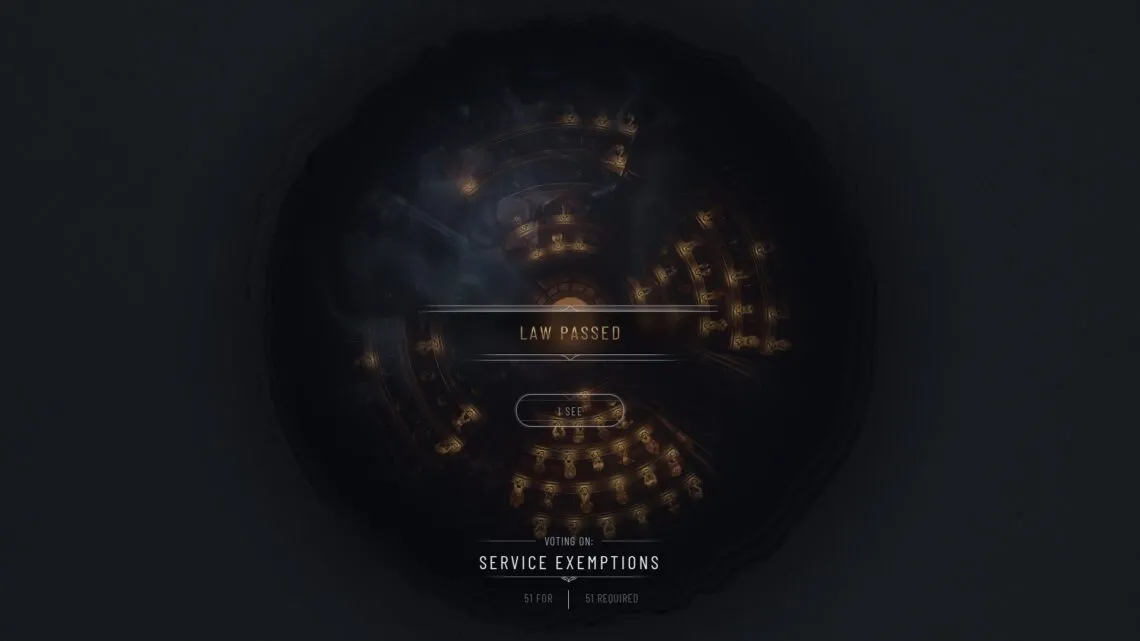 Frostpunk 2 Parliament Scene
Frostpunk 2 Parliament Scene
The parliament scenes are the pinnacle of the game’s audio-visual design. Detailed depictions of individual parliamentarians, their arguments and discussions, and the way the interface focuses the player’s attention on the vote create a tense and exciting experience. Securing that crucial 51st vote is perhaps the most satisfying moment the game offers. The parliament is Frostpunk 2‘s core, and 11 Bit Studios has crafted it into a remarkable symbol for a remarkable game.





Comments (0)